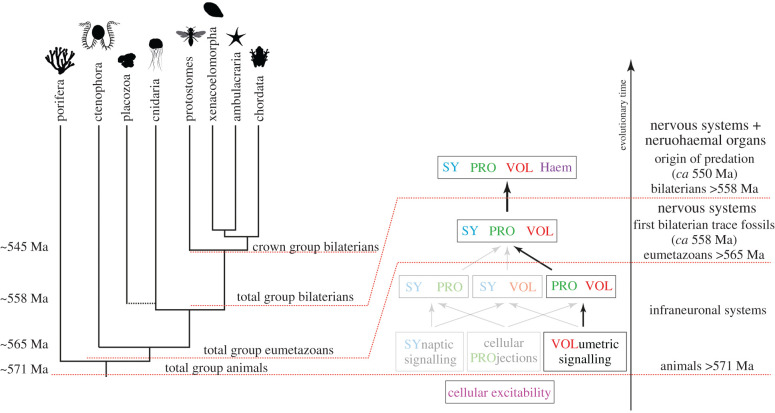Figure 3.
Elementary combinatorics of infraneuronal systems and the path suggested by the chemical brain hypothesis. Phylogenetic tree of major groups of animals under sponges-first, representing our best current understanding of animal phylogeny [31]. Total group animals appeared shortly before 571 Ma, as suggested by the fossil record [115], and inherited the property of cellular excitability from their protist ancestors. Some aspects of advanced nervous systems appeared before eumetazoans, including volumetric signalling and possibly cellular projections involved in signalling. Total group eumetazoans appeared somewhat before 565 Ma with nervous systems combining synaptic transmission, projections and volume transmission appearing in the stem lineage or independently in ctenophores and cnidarians + bilaterians. The first bilaterian trace fossils date to around the same time [116]. With total group bilaterians, neurohaemal organs and centralized brains started to evolve [117] around 558 Ma. This period experienced the great neuropeptide explosion and was followed by the origin of predation (ca 550 Ma) [3] and the Cambrian explosion. Images are from PhyloPic.

